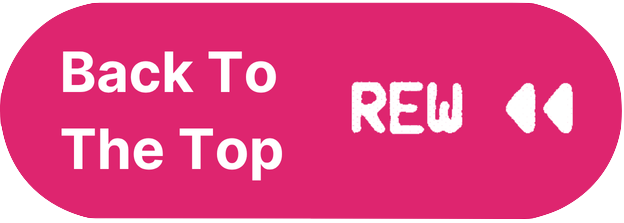Unyte Listening Programs
Safe & Sound Protocol (SSP) + Rest & Restore Protocol (RRP)
Your nervous system has a soundtrack. Let’s help it find the rhythm of safety.
What Are Listening Programs?
The Safe & Sound Protocol (SSP) and the Rest & Restore Protocol (RRP) are evidence-based tools that use the sense of sound as an access point to support nervous system regulation. They have been researched, developed, and offered by Stephen Porges, the founder of Polyvagal Theory.
Delivered through the Unyte Health app, each program uses specifically filtered sound frequencies and patterns to help your body shift from “on guard” to “at ease.” They’re gentle, structured, and tailored to your nervous system’s pace — not a playlist, but a neural experience.
Rooted in neuroscience and trauma-informed practice, these programs are neuro-affirming tools for:
Sensory sensitivity & overwhelm
Emotional regulation & recovery
Stress, burnout & shutdown
Rejection sensitivity
Connection, focus & rest
In short: SSP and RRP help your nervous system listen differently —
not just to sound, but to safety.
SSP and RRP are always guided by a trained provider (that’s me!) and paced to fit your nervous system.
Safe & Sound Protocol (SSP)
Feel Safer | Connect Easier | Engage More Fully
How it works:
The Safe & Sound Protocol (SSP) uses filtered music to help the nervous system move from states of defense into states of connection. Developed by Dr. Stephen Porges, it’s grounded in Polyvagal Theory, which explains how safety and social engagement shape how we feel and function.
SSP isn’t about forcing calm — it’s about inviting safety through connection. It exercises the ventral vagal system (the “social engagement” pathway) through filtered sound frequencies that cue the body: you’re safe, you can rest, you can connect.
It may help with:
Sensory sensitivities (especially to sound)
Anxiety, trauma, and emotional reactivity
Social connection and focus
ADHD and nervous system dysregulation
In short:
SSP supports your body in finding safety through connection — making it easier to regulate, relate, and engage with life.
-
Best for clients who feel comfortable and safe listening on their own.
Access to the Unyte app for up to one year (includes one round of SSP Core + optional SSP Connect and SSP Balance).
One 60-minute initiation listening session (pacing + safety plan).
Ongoing email support included.
Optional check-in sessions available at $165 / 50 min.
$600
-
Tailored for children and youth supported by a caregiver.
Access to the Unyte app for up to one year (one round of SSP Core + optional SSP Balance and Connect).
One 60-minute parent consultation + delivery plan.
Ongoing email support included.
Optional check-in sessions available at $165 per 50 min.
Fee: $600
-
Best for complex or trauma-impacted nervous systems needing real-time guidance.
Access to the Unyte app for up to one year (SSP Core + optional Balance and Connect).
One 60-minute initiation + nervous-system mapping session.
Four 50-minute co-regulated listening sessions with therapist guidance.
Email support throughout.
Additional therapy sessions available at $165 / 50 min.
Starting at $1,050 (Includes intake + 4 sessions).
-
Additional household member self-paced access to the Unyte app for up to one year to complete one round of SSP Core, plus access to SSP Connect and SSP Balance,
One 60-minute initiation session to set pacing and ensure safety.
Ongoing email support included.
Optional check-in sessions available at $165 per 50 min session.
$450
-
Self-paced additional round of SSP Core: $465
Co-regulated additional round of SSP Core: $850 + (dependent on support needs)
-
For an additional $450, you can add a self-paced second protocol (SSP or RRP) after completing your first program.
Includes:
If adding SSP: One round of SSP Core, plus access to SSP Balance and SSP Connect for up to one year.
If adding RRP: Ongoing access to the RRP program for up to one year.
One 60-minute listening + titration session to set pacing and ensure safety.
Email support during the process.
Why add a second protocol?
Many clients begin with SSP to foster safety and connection, then add RRP for deeper rest and recovery.
Others may choose the reverse — starting with RRP to restore internal calm and resilience, and then moving into SSP to strengthen connection, engagement, and relational safety.
Adding a second protocol provides flexibility and continuity, offering the benefits of both internal regulation and external connection, all with therapeutic oversight to ensure safe and effective delivery.
SSP Pathways & Pricing
Rest & Restore Protocol (RRP)
Settle Deeper | Rest Easier | Recover More Fully
How it works:
The Rest & Restore Protocol (RRP) is designed to help your nervous system find safety in stillness. It uses rhythmic sound patterns that mirror natural biological rhythms—heartbeat, breath, and rest cycles—to support self-regulation, rest, and recovery.
RRP is about allowing your body to rediscover safety in slowing down. It works with the body’s dorsal and ventral vagal systems (an “immobilization with safety” pathway), helping the nervous system rest without collapsing, pause without panic, and restore without shutdown.
It may help with:
Fatigue, burnout, or emotional exhaustion
Sleep difficulties or chronic stress
Shutdown or freeze responses
Recovery after trauma or illness
In short:
RRP is about helping the nervous system feel safe in stillness — building the foundation for true rest, repair, and self-regulation.
-
1-year Unyte app access
One 60-minute initiation session ($165 value)
Optional check-in sessions available at $165 / 50 min.
$600
-
Additional household member self-paced access to the Unyte app for up to one year to complete RRP.
One 60-minute initiation session to set pacing and ensure safety.
Ongoing email support included.
Optional check-in sessions available at $165 per 50 min session.
$450
-
For an additional $450, you can add a self-paced second protocol (SSP or RRP) after completing your first program.
Includes:
If adding SSP: One round of SSP Core, plus access to SSP Balance and SSP Connect for up to one year.
If adding RRP: Ongoing access to the RRP program for up to one year.
One 60-minute listening + titration session to set pacing and ensure safety.
Email support during the process.
Why add a second protocol?
Many clients begin with SSP to foster safety and connection, then add RRP for deeper rest and recovery.
Others may choose the reverse — starting with RRP to restore internal calm and resilience, and then moving into SSP to strengthen connection, engagement, and relational safety.
Adding a second protocol provides flexibility and continuity, offering the benefits of both internal regulation and external connection, all with therapeutic oversight to ensure safe and effective delivery.
RRP Pathways & Pricing
Getting Started
1) Consultation
A short call or email to confirm fit, answer questions, and schedule your intake/listening session.
2) Setup
You’ll get Unyte app access and meet (online or in-person) for intake. Together we’ll titrate your listening plan—pacing, session length, and safety cues—so it feels doable and kind to your nervous system.
3) Support
We check in as needed to adjust pacing, troubleshoot, and celebrate wins. You’re not doing this alone.
Accessibility & Preferences
Need a different format (written steps, audio recap, visual schedule), shorter sessions, or extra breaks?
Let me know—we’ll adapt the plan.
Fast Forward Summary:
The Safe & Sound Protocol (SSP)
→ Builds safety, connection, and engagement through filtered music and vagus-nerve activation.
The Rest & Restore Protocol (RRP)
→ Supports rest, recovery, and resilience by guiding your body back into balance.
Both programs:
Delivered through the Unyte Health app
Self-paced or co-regulated options available
Gentle, evidence-based, and neuro-affirming
Designed for ADHD, trauma, sensory sensitivity, and burnout
Location: Online or in-person (Houston BC)













